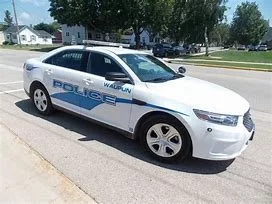
Winter is approaching and the week of November 18-22 has been designated as Winter Weather Awareness Week in Wisconsin. This provides us with a reminder that now is the time to plan and prepare for winter weather and the things we can do to be ready and stay safe. Being informed and planning are important things to do.
Know the terms: – Beginning this year the National Weather Service has updated some of their language related to watches, warnings, and advisories related to extreme cold weather and wind chills.
What was known as a Wind Chill Watch has been replaced with Extreme Cold Watch.
Wind Chill Warnings have been replaced with Extreme Cold Warnings.
The previous Wind Chill Advisory has now been named a Cold Weather Advisory.
These new names will be used when the need for these types of alerts are needed during extremely cold weather. Other current types of watches and warnings include:
A Winter Storm Watch is generally issued several days before a storm is expected and significant winter weather is a possibility. This is a time to plan/prepare for weather impacts that may happen.
A Winter Storm Warning means that dangerous winter weather is expected soon or is already occurring. This is a time for action to keep yourself safe.
Snow Squall Warnings are issued for intense bursts of snow and wind in a small targeted area where rapid deterioration of conditions can occur.
Have A Kit – Check your Emergency Supply Kits both in your home and vehicle. Vehicle kits should include things like water and non-perishable foods such as energy bars, blankets, flashlights, phone chargers, jumper cables, flares, shovels and sand or cat litter for traction if your vehicle becomes stuck. Home kits should include enough non-perishable food, water, and medications to last up to 72-hours. Consider special dietary needs such as formula for infants or items with those on special dietary
restrictions. First aid supplies, a flashlight, and a NOAA Weather Radio, along with copies of insurance policies, prescriptions, and a list of important contact numbers, are also great inclusions. Store your kit in a location where you can access it quickly during an emergency. When inclement weather occurs- Monitor forecasts and advisories that are issued. Avoid travel if possible. If you do travel make sure you share your plans in case you become stranded. Slow down and allow extra distance between your vehicle and others to allow you to stop safely on slippery roads. Keep furnace vents clear of snow and ice to avoid possible danger from carbon monoxide in your home. If power goes out and you run a generator, be sure it is only done outside a safe distance from windows, doors and garages. If you must use an electric portable space heater, keep it a safe distance away from
anything flammable. Make sure the heater has safety features such as automatic shut off if it is tipped over. Never use your stovetop, oven, grills, or other fueled devices as a heat source to heat your home. More information is available through your County Emergency Management Office including our Facebook page along with FEMA’s ready.gov website and Wisconsin Emergency Management’s Ready Wisconsin website.







